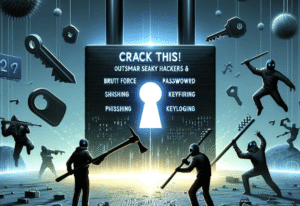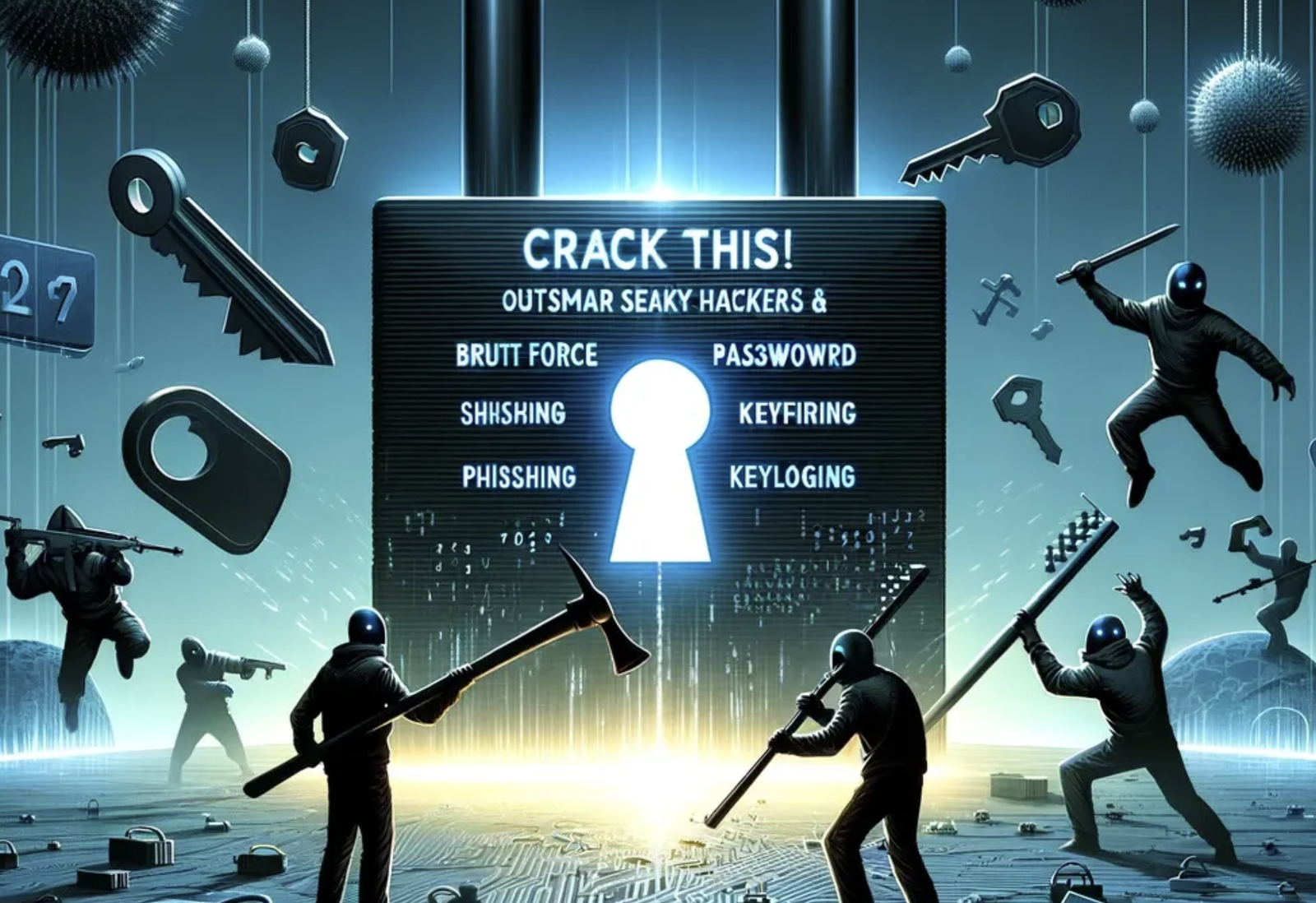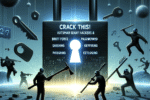Introduction
Passwords remain the first line of defense for our digital identities, yet they are also the weakest link. A staggering 81% of data breaches are caused by compromised passwords. Hackers know this all too well, and their tactics have grown more sophisticated over time—moving beyond simple brute force attacks into dictionary-based hacks, credential stuffing, keyloggers, phishing, and social engineering.
In 2023 alone, phishing attacks aimed at stealing credentials increased by nearly 30%, proving that password theft is still one of the most common and successful forms of cybercrime.
This article will guide you through the most common password attacks, the tools hackers use, and—most importantly—how you can outsmart their tricks in 2024.

🔓 Brute Force Attacks
How They Work
Brute force attacks are the most straightforward method of cracking a password. Hackers try every possible combination of letters, numbers, and symbols until they succeed. Weak or short passwords can fall within seconds, while longer and more complex ones may take years to crack.
Tools Hackers Use
-
Hydra – A versatile tool for testing multiple logins across services.
-
John the Ripper – Famous for its ability to crack different password hashes.
-
Hashcat – GPU-powered, making it extremely fast for brute force attempts.
Protection Tips
-
Use long and complex passwords (minimum 12–16 characters).
-
Enable account lockout policies so repeated failed attempts block access.
-
Apply multi-factor authentication (MFA) to add a second layer of security.
📖 Dictionary Attacks
How They Work
Unlike brute force, dictionary attacks don’t try every possible combination. Instead, hackers use a “dictionary” of common passwords—like 123456, qwerty, or words from leaked databases. Variations (like replacing “a” with “@”) are often included to catch weak attempts at creativity.
Tools Hackers Use
-
John the Ripper – Can apply “rules” to mutate dictionary words.
-
Hashcat – Known for GPU speed and supporting rule-based attacks.
-
CrackStation – A massive wordlist of real-world passwords from breaches.
Protection Tips
-
Avoid common words or phrases.
-
Use a password manager to generate and store random, unique passwords.
-
Change passwords regularly, especially after a suspected breach.
⌨️ Keylogger Attacks
How They Work
Keyloggers record everything you type on your keyboard, including passwords, credit card details, and private messages. They can be installed as software through malware or as hardware devices secretly plugged between your keyboard and computer.
Software Keyloggers
-
Actual Keylogger – Records keystrokes and screenshots.
-
Refog Keylogger – Tracks keystrokes and app usage.
-
KidLogger – Marketed as parental control but misused by hackers.
Hardware Keyloggers
-
KeyGrabber USB – A tiny USB device storing keystrokes.
-
KeyLlama – Compact and discreet, capable of storing large data.
-
AirDrive Keylogger – Even allows Wi-Fi remote access to stolen data.
Protection Tips
-
Install reputable antivirus software and keep it updated.
-
Avoid downloading suspicious attachments or software.
-
Regularly inspect hardware on shared or public devices.
🎭 Phishing & Credential Theft
The Rise of Phishing
Phishing emails remain one of the most effective ways to steal passwords. Attackers pose as banks, tech companies, or even colleagues to trick victims into revealing credentials.
-
Email phishing – Fake “reset password” emails.
-
Smishing – Fake SMS with malicious links.
-
Vishing – Phone calls impersonating banks or IT support.
Protection Tips
-
Verify sender emails and phone numbers.
-
Never click links without hovering to check the URL.
-
Use spam filters and phishing-resistant MFA methods like hardware tokens.
🛡️ Best Practices to Outsmart Hackers in 2024
-
Create Strong, Unique Passwords
-
Use a mix of uppercase, lowercase, numbers, and symbols.
-
Avoid reusing the same password across multiple accounts.
-
-
Adopt Multi-Factor Authentication (MFA)
-
Even if hackers steal your password, they can’t access your account without a second factor.
-
-
Use a Password Manager
-
Tools like LastPass, Bitwarden, or 1Password create and remember strong passwords for you.
-
-
Stay Updated
-
Regularly update software, browsers, and apps to patch vulnerabilities.
-
-
Be Security Aware
-
Watch for phishing red flags: urgency, misspellings, or unusual requests.
-
Educate employees or family members to recognize threats.
-
-
Regularly Monitor Accounts
-
Check for unusual login activity.
-
Use services like Have I Been Pwned to see if your credentials were leaked.
-
🔐 Conclusion
In 2024, hackers are smarter than ever, but so are the defenses available to us. From brute force and dictionary attacks to keyloggers and phishing campaigns, the landscape of password theft continues to evolve.
The solution isn’t just in technology—it’s in awareness and good digital hygiene. Strong, unique passwords combined with multi-factor authentication and vigilance can prevent most attacks.
Remember: your password is often the only barrier between a hacker and your personal or financial data. Protect it as you would your most valuable asset.
Stay safe, stay alert, and outsmart hackers before they outsmart you.
For more articles, please refer to this link.








